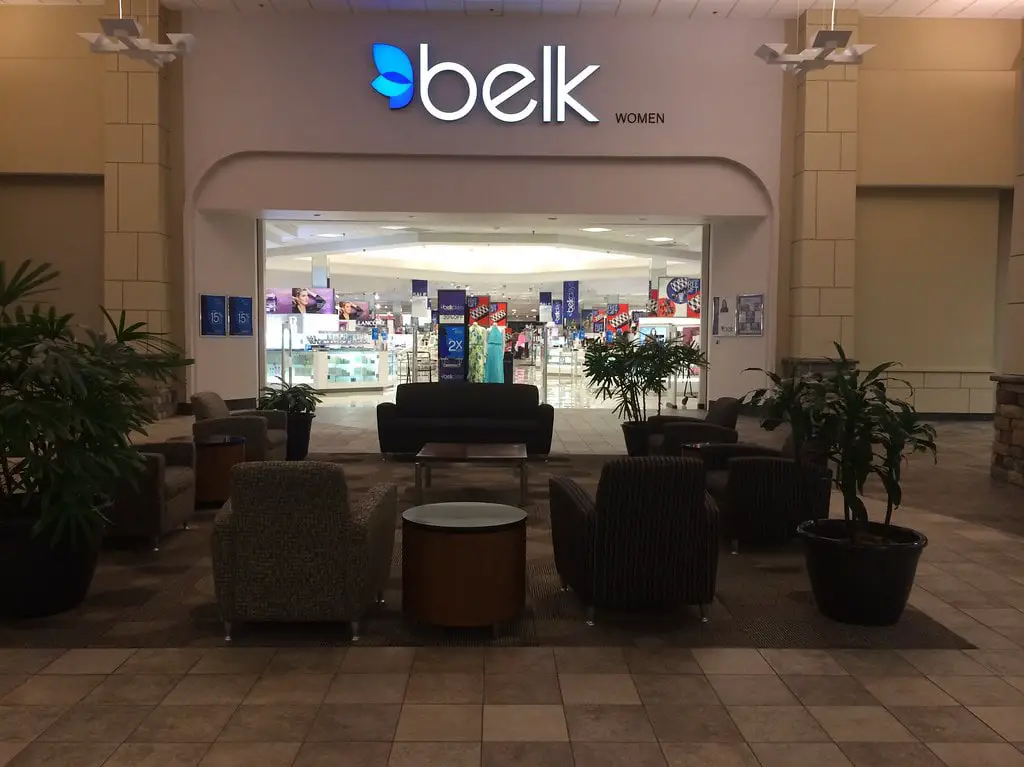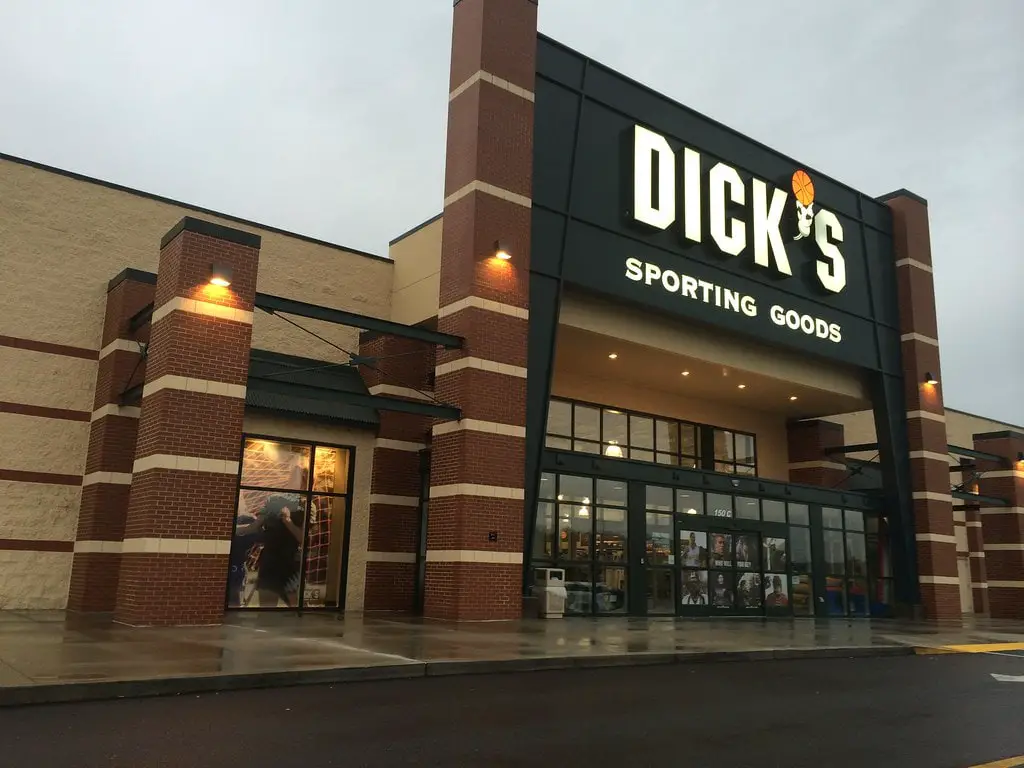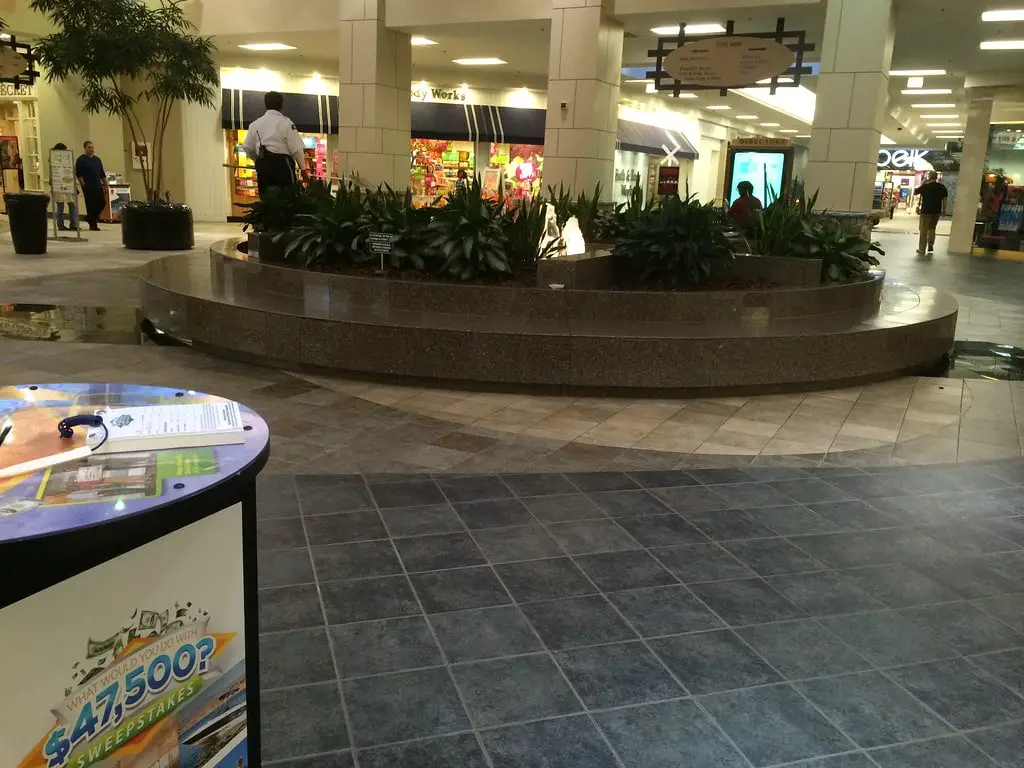Establishment and Initial Launch
The groundbreaking ceremony marked the beginning of Lakeshore Mall in Gainesville, Georgia, on May 11, 1968. The project, envisioned by Lakeshore Plaza Enterprises, Inc., a consortium of local investors, aimed to create the largest shopping center outside of metro Atlanta.
The development, which had a budget of $3 million, promised to catalyze retail growth and attract major retailers to the region.
The original design included a substantial 110,000-square-foot space for JCPenney, relocating from its previous location at South and Main. This move was strategic and intended to draw more shoppers and increase sales. Alongside JCPenney, a 24,000-square-foot Roses store was also planned. Both stores were positioned as anchor tenants, set to drive traffic and boost the mall’s profile from the outset.
Anticipating future expansion, the developers also included a 15,325-square-foot A&P Supermarket in their plans. This store, crucial for daily foot traffic, opened during the mall’s second phase. The initial setup also featured a drugstore, Jacob’s, which later became a Revco and eventually a CVS.
These foundational tenants shaped the early commercial landscape of Lakeshore Mall, setting a solid groundwork for its growth and things to do in Gainesville, Georgia.
Expansion and Developments
In my view, the 1980s were pivotal for Lakeshore Mall. Specifically, in 1987, the developers added a new wing opposite the original JCPenney location.
This expansion introduced a Sears store, enlarging the mall’s retail footprint. Adding a food court and a movie theater, branded as Hollywood 15, transformed the mall into a multi-purpose venue that attracted more visitors and increased dwell time.
This period also saw other notable developments. Morrison’s Cafeteria was later rebranded as Piccadilly Cafeteria and became a popular dining spot within the new Sears wing.
Around the same time, the original Roses store, which had been part of the mall since its opening, closed in the early ’90s and was replaced by a second Belk.
This shift reflected a change in the retail mix that aimed to keep up with shopper preferences and the competitive retail market.
The landscape of the mall continued to evolve into the late ’90s and early 2000s. An ownership change occurred in 1998 when Colonial Properties took control, signaling a new direction in management and strategy.
Such changes were crucial in maintaining the mall’s relevance in a rapidly changing retail environment. This era set the stage for future adaptations and challenges that the mall would face.
USA Quiz
How many questions would you like?
Ownership Changes
The frequent changes in ownership reflect the mall’s struggle to keep pace with the retail industry’s evolution.
In 1998, Colonial Properties took over Lakeshore Mall, aiming to revitalize its appeal through strategic management and tenant diversification.
In 2010, another change occurred when Garrison Investment Group acquired the mall. This transition marked a crucial phase, as new ownership often brings new strategies.

Garrison’s approach included more community-focused initiatives and an attempt to attract non-traditional tenants that could draw local visitors beyond just shopping, like leisure and entertainment options.
The next ownership shift occurred in April 2017 when Stockbridge Enterprises, a company based near Detroit, Michigan, purchased Lakeshore Mall. The last change was in October 2022.
Each ownership transition has aimed to inject new life into the mall, sometimes through renovations or by reshaping the tenant mix to adapt to the latest retail trends and consumer expectations.
These changes underscore Lakeshore’s ongoing challenges in a dynamic and often unforgiving retail landscape.
Renovations and Modernization
The 2006 renovations were a response to the evolving demands of retail. The mall’s management introduced new flooring, updated restrooms, and refreshed entrances. This overhaul aimed to create a more welcoming atmosphere for shoppers.
These updates also included the addition of a new family restroom and welcoming seating areas, showing an understanding of the needs of modern consumers who value comfort and accessibility.
The aesthetic upgrades were timely, as they coincided with a broader trend in retail: malls began focusing on improving customer experiences to compete with online shopping.
The changes at Lakeshore Mall mirrored efforts across the industry to retain foot traffic by enhancing physical spaces to make them more appealing and functional.
Moreover, modernization has extended to the mall’s external features, such as parking lot improvements and landscaping enhancements.
These changes were not merely cosmetic but strategic, aimed at improving overall customer satisfaction and positioning Lakeshore Mall as a community center.
Investments in infrastructure and design were crucial in attempting to pivot the mall towards a more experiential offering that aligned with new consumer behaviors.

2013 Revitalization
The latest phase of Lakeshore Mall’s evolution began notably in 2013 when Dick’s Sporting Goods opened a 50,000-square-foot store.
This store took over the area previously occupied by the food court and parts of the inline mall space.
The opening, marked by a ribbon-cutting ceremony on October 1, 2013, signaled a shift toward incorporating more specialized retail options.
Following this, the mall saw various smaller, specialized stores emerge. These businesses, ranging from local boutiques to service-oriented establishments, aimed to attract different customer segments.
This strategy pivoted from relying heavily on large department stores that no longer draw the same traffic levels.
Decline of Anchor Stores
The decline of anchor stores significantly impacted Lakeshore Mall. Sears announced its closure in December 2018 as part of a broader retreat that involved shutting down 80 stores nationwide.
This was a major blow as Sears had been a key draw for the mall, attracting a steady stream of visitors for decades.
The closure marked a turning point, highlighting the challenges faced by traditional brick-and-mortar stores in the digital age.
Similarly, JCPenney, another major anchor, closed its doors in October 2020. This move was part of a company-wide downsizing that saw 154 stores cease operations. The loss of JCPenney further reduced foot traffic, compounding the mall’s challenges.
These closures reflect a larger trend in the retail sector, where once-dominant players are struggling to adapt to new shopping behaviors and the rise of online commerce.

The exit of these anchor tenants left noticeable gaps in the mall’s occupancy and altered its commercial dynamics.
It forced a rethinking of the mall’s tenant strategy, shifting from traditional large department stores to smaller, more varied retail offerings.
This transition aimed to address the changing preferences of shoppers and the need for a more diverse retail experience.
Current Status and Community Impact
Lakeshore Mall currently serves more as a community space than a traditional mall. Despite over half of its retail space standing vacant, the mall still hosts local events and provides a venue for small businesses.
This shift towards serving local needs seems to be an effort to maintain relevance in a community that may no longer support a large-scale traditional mall.
Moreover, the remaining businesses seem to tailor their services and products more closely to the needs of Gainesville residents.
This adaptation might be seen as a way for the mall to sustain itself, focusing on practical uses rather than traditional retail alone.
Local events and gatherings hosted at the mall help maintain its position as a community landmark, even if it no longer draws large crowds for shopping alone.
In adapting to these new roles, Lakeshore Mall reflects broader shifts in retail and community spaces across the country.
Malls everywhere are finding new purposes as market conditions evolve, and Lakeshore’s current state may just reflect this larger transformation in the retail landscape.

Recent Changes and Future Prospects at Lakeshore Mall
Lakeshore Mall in Gainesville, GA, has changed, notably in its ownership and retail offerings. In late October 2022, Branch Lakeshore Associates LP acquired the mall for $15 million.
This purchase by an Atlanta-based company marked a new chapter in the mall’s history, suggesting a potential revitalization in its future.
Despite the change in ownership, Belk, one of the mall’s longtime anchor stores, has confirmed its intention to stay, indicating stability and continued service to the Gainesville community.
This commitment from Belk is crucial as it has been a foundational presence in the mall through various economic cycles, including the Great Recession and the COVID-19 pandemic.
The closure of Bath & Body Works and the vacancies left by JCPenney and Sears underscore the challenges and evolving nature of Lakeshore’s retail landscape.
The recent developments suggest a strategic effort to redefine and repurpose Lakeshore Mall, potentially shifting it from a traditional shopping destination to a more diversified commercial and community space.
Bundle your hotel + flight together to save more on your next trip! Book now at Expedia.com
bestattractions.org website participates in the Amazon Services LLC Associates Program. This affiliate advertising program allows sites to earn advertising fees through links to Amazon products at no additional cost to you. Amazon and the Amazon logo are registered trademarks of Amazon.com, Inc., or its affiliates.

